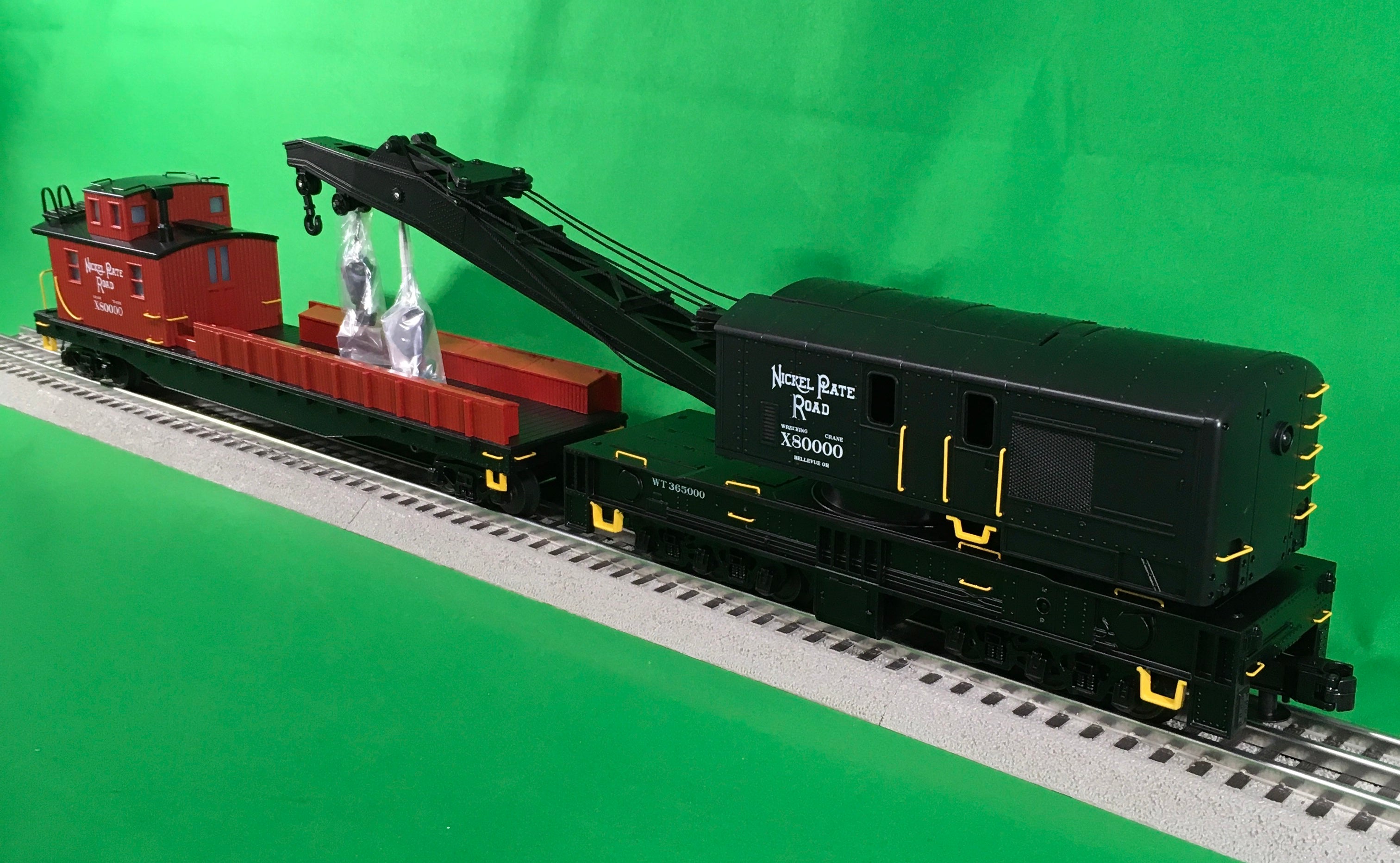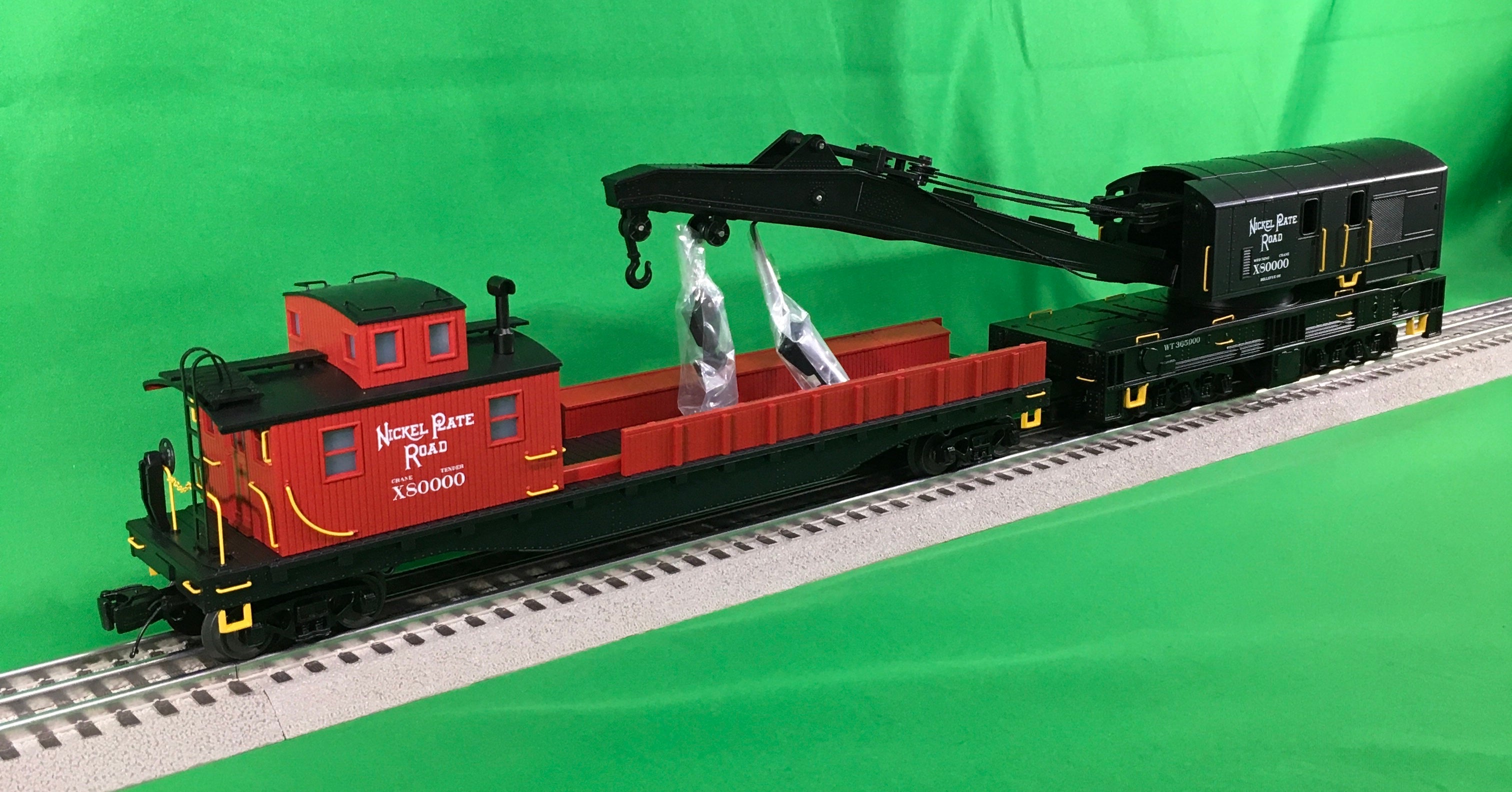Menu
Recommended for You
Browsing history
- Choosing a selection results in a full page refresh.










| Announced Date: | Nov 2021 |
| Released Date: | May 2023 |
| Individually Boxed: | Yes - Both Crane & Tender are in the same box. |
In the early days of railroading, the job of cleaning up a wreck was usually done by men and horses. The first steam wrecking crane, a relatively small affair with a 20-ton lifting capacity, appeared in 1883. Its maker, Industrial Works of Bay City Michigan, introduced a fully revolving model a decade later. As the product became popular, Industrial Works, now renamed Industrial Brownhoist, and its chief competitor, Bucyrus-Erie of South Milwaukee, introduced larger and larger models to cope with increasing locomotive and car weights. By the World War I era, 120 tons was a common size, and by the Second World War, crane sizes topped out at around 250 tons of lifting capacity.
While a wreck train on the way to a wreck had priority over other traffic, cranes were subject to rather low speed restrictions, typically around 35 mph with the boom trailing and 25 mph if the boom was facing forward. The larger hook closer to the cab was actually the main lifting hook, used for locomotives. The hook at the end of the boom was a lower-capacity auxiliary hook, used when more reach was needed. Slings, chains, and spreader bars were used to attach the hook to the car or locomotive being lifted; the hooks were never attached directly. While some cranes were capable of limited self-propulsion, that was only for positioning at a site, not for travel to and from wrecks or jobs.
Because of their importance and the urgent nature of their work, cranes were usually well maintained and lasted for many decades. Our model represents a typical 250-ton diesel-powered Industrial Brownhoist crane constructed in the post-WW II era; while some of these were built new as diesels, others were upgraded from steam-powered models.
Today wrecking cranes are relatively rare and seldom seen, as most wreck cleanup is done by outside contractors with trucked-in bulldozers and other heavy equipment. Most large railroads, however, still maintain a 250-ton crane or two like our model, just in case.
177 W Main St
Atlanta, IN 46031
765-292-2022
support@mrmuffinstrains.com
Sign up for our newsletter and be the first to know about coupons and special promotions.
© 2024, MrMuffin'sTrains Powered by Shopify
